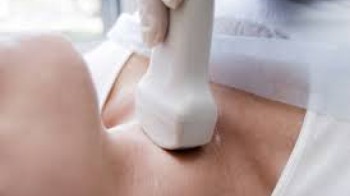Ultrasound
Thyroid ultrasound is a sensitive and simple method for displaying the structure of the thyroid gland, its anatomical location, size and shape, whereby any changes that deviate from the normal structure can be seen (nodules, cysts, inflammatory changes, tumors).
No preparation is required for the ultrasound examination, it is performed simply and quickly, it has no harmful effects and can be applied to all patients, including small children, pregnant women and immobile people.
We have 5 color doppler machines and there is no need to wait for the thyroid ultrasound, you can do it whenever you want, 8am-4pm every working day, with or without notice, as well as thyroid hormones.
Elastography
Elastography is a non-invasive method in which the resistance of soft tissues is measured in order to detect suspicious changes and determine the nature of the tumor.
The examination is very similar to a classic ultrasound examination. The thyroid gland in which the nodes are located is pressed with an ultrasound probe five to ten times, at equal intervals, with equal strength, and the so-called "live" image of the tissue we are examining, shown in different colors. After that, the image is frozen, and the obtained data is processed by calculating the resistance of different zones of the examined tissue, that is, of the organ.
The examination is completely painless, non-invasive and simple. It is based on the fact that all tumors, especially malignant ones, resist the pressure of the probe, which is shown by color changes on the monitor of the ultrasound machine, from red, through yellow and green for normal tissues, to blue and gray-black for suspicious and tumor-altered tissues. Some tumors give five, even over twenty times higher pressure resistance compared to normal structures.
The application of elastography requires a suitable program - software, on the latest generation ultrasound machine, as well as ultrasound probes adapted to this method. As a method, it can be used in examining suspicious changes in the breasts, thyroid and parathyroid glands, and the liver.
Experiences over the last few years show that a positive finding on elastography in examining suspicious changes in 70-80% of cases is confirmed by a histopathological finding of cancer.

